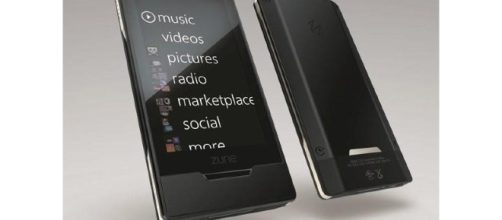Remember MP3 players? They used to be the only way to make your music mobile. Sure, there were portable CD players, but they couldn't fit in your pocket. The real charm of the MP3 player was its size. Easy to hold, easy to store, and easy to stow away into your pocket. MP3 players have, unfortunately, become obsolete thanks to the advancements of phones and the eventual hybridization of touch screens, phones, MP3 players, and cameras to make what we all now know as "smart phones." I always wondered why people preferred to put music on their phones versus an MP3 player.
The art of having a music app on a smart phone is imprecise, unspecialized, and sloppy; to this day, I still think that there could be something better out there. The Zune HD was a good alternative, but it is now only a remnant of a memory in the marketplace.
The king of players
Back in the days of devices made solely to play music, Apple came out with the iPod Touch (or iTouch, which is also the basis of all current iPhones). This had never been seen before. It had a touchscreen, internal memory, games, and could even connect to wireless internet access points. The iTouch was cool, not to mention that Apple was basically running the MP3 player market. It was either get an Apple device, or get some second-hand off-brand player that might work.
Apple was unchallenged, even when Microsoft released the Zune. The first concept of Zune was like that of an iPod Nano. A small rectangular device with a screen and some buttons underneath to perform various functions. Microsoft copied practically everything from Apple's line of iPods, except for one crucial thing.
The Zune OS
The Zune's operating system (OS), to this day, is the most unique and crisp mobile OS I've ever encountered, specifically for the Zune HD (Microsoft's copy of Apple's iTouch). It was sized reasonably well, and had a good weight to it. When you turned the device on, it would throw you into a view of two menus. The first would give you options to play your music (with a "play" button right there to shuffle all your songs), watch videos, open the web browser, settings, and some other things like the radio.
The other menu was given the title "quick play," and this menu was essentially your most recently used (or played) albums, apps, and web pages. If you were in a Boston phase, or some other band, this came in handy, as you could get an album playing with two presses on the screen.
Flawless music selection
I loved selecting music in the ZHD's music menu. It would give you the option to sort everything by song names, albums, artists, even genres (and the best thing, it would OMIT "The" in any band or album names). So, there wasn't this huge concentration of "T" bands, like in most music player apps these days. When you found a band you wanted to listen to, you could either tap on the band's name, or hit a play button next to them which would automatically start playing all their songs on shuffle.
If you tapped on the band's name, it would show you each album by release date and not in alphabetical order. I don't know why, but I really liked this feature, and not a single music player or app I have found can replicate it.
This video is a quick look into what I've been rambling on about and also highlights some features that I didn't even know about.
The Zune was, and always will be, my favorite way to play music. If there is ever a time when it comes back, you can bet that I, and many other fans, will be drooling and throwing our money at it.


